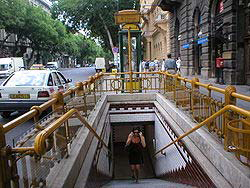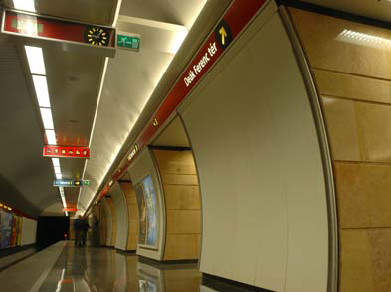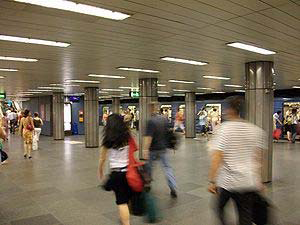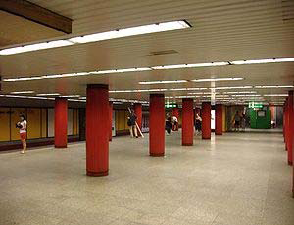| Company Portrait | Quality System | Organigram |
| Board of Directors | Memberships |
Contact |
| Management | History |
Maps |
Design of metro lines and tunnels



Location:BUDAPEST
Principal:BUDAPEST Municipality 1052 Budapest, Városház u. 9-11
Year:2010
Revenue:
Description of the operating network:
The Budapest metro network actually consists of 3 operating lines: M1, M2 and M3. The line M1 was put into operation in 1896. The lines M2 and M3 were – in several phases – put into operation between 1970 and 1990. The metro line M1 was lengthened by 1,5 km in 1973, the entire line was reconstructed in the end of the 1990ies. The line M2 was entirely reconstructed between 2002-2007, after 30 years of continuous operation. The total length of the operating network is 32,6 km; the number of stations is 42. UVATERV Ltd. was the general consultant of the lines M2 and M3, of the total reconstruction of the line M2 and of the lengthening project by 1,5 km of the line M1. The company played an important role in the modernization of the line M1 as well: it was charged with the design task of the historically/architecturally authentic reconstruction of the stations and with the design of the modernization of the electrical systems and of the track.
Metro line M1
Length: 4,4 km
Number of stations: 11
Number of workshops: 1
Vehicle park: 23 trains, composed of 3 low floor cars each
Shortest possible headway: 120 sec.
Train traffic: traditional signaling system
Operation technology: central dispatcher system.
Passenger traffic: visible and audible passenger information system
Fire protection: automatic heat and smoke detection system
Power supply: 600 V DC, special catenary system
Telecommunication and railway signaling systems operating with optic cable
Connecting surface transport systems: large tram and bus network, direct transfer connection to the other two metro lines.
Time of implementation: 1894-1896
Metro line M2
Length: 10,0 km (7,8 km deep; 1,2 km subsurface; 1,0 km surface)
Number of stations: 11
Number of workshops: 1
Vehicle park: 22 trains (composed of 5 cars 20m long each)
Shortest possible headway: 120 sec.
Number of daily travels: ~450.000
Train traffic: automatic train control (ATO/ATP) system is being installed (2009)
Operation technology: local (station), line and central (network) dispatcher systems.
Passenger traffic: operation of exhaustive, many-sided passenger information system (visible, audible and mechanically perceptible)
Fire protection: multi level system with newest developed equipments (water mist extinguishers, jet-fans)
Power supply: 750 V DC, upper contact type third rail supply for the train traffic
Telecommunication and railway signaling systems: realized with electronic and IT devices
Ventilating: main ventilation system dimensioned for heat- and smoke removal
Connecting surface transport systems: large tram and bus network, direct transfer connection to the other two metro lines and two main railway stations.
Time of design: 1964-1972
Time of implementation: 1964-1972
Metro line M3
Length: 17,3 km (6,4 km deep; 9,4 km subsurface; 1,5 km surface)
Number of stations: 20
Number of workshops: 1
Vehicle park: 45 trains (composed of 6 cars 20m long each)
Shortest possible headway: 90 sec.
Train traffic: automatic train control (ATO/ATP)
Operation technology: local (station), line and central (network) dispatcher systems.
Passenger traffic: operation of visible, and audible passenger information system
Fire protection: automatic heat and smoke detection systems
Power supply: 750 V DC, upper contact type third rail supply for the train traffic
Telecommunication and railway signaling systems: realized with electronic and IT devices
Ventilating: main ventilation system dimensioned for heat- and smoke removal
Connecting surface transport systems: large tram and bus network, direct transfer connection to the other two metro lines one main and two regional railway stations.
Time of design: 1970-1990
Time of implementation: 1972-1990


Entrance on the line M1 Deák tér station on the line M2


Ferenc körút station on the line M3 Klinikák station on the line M3